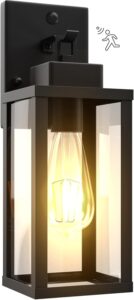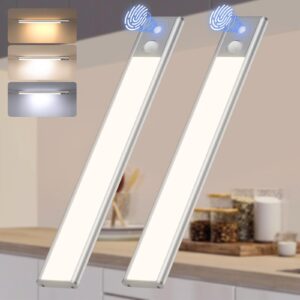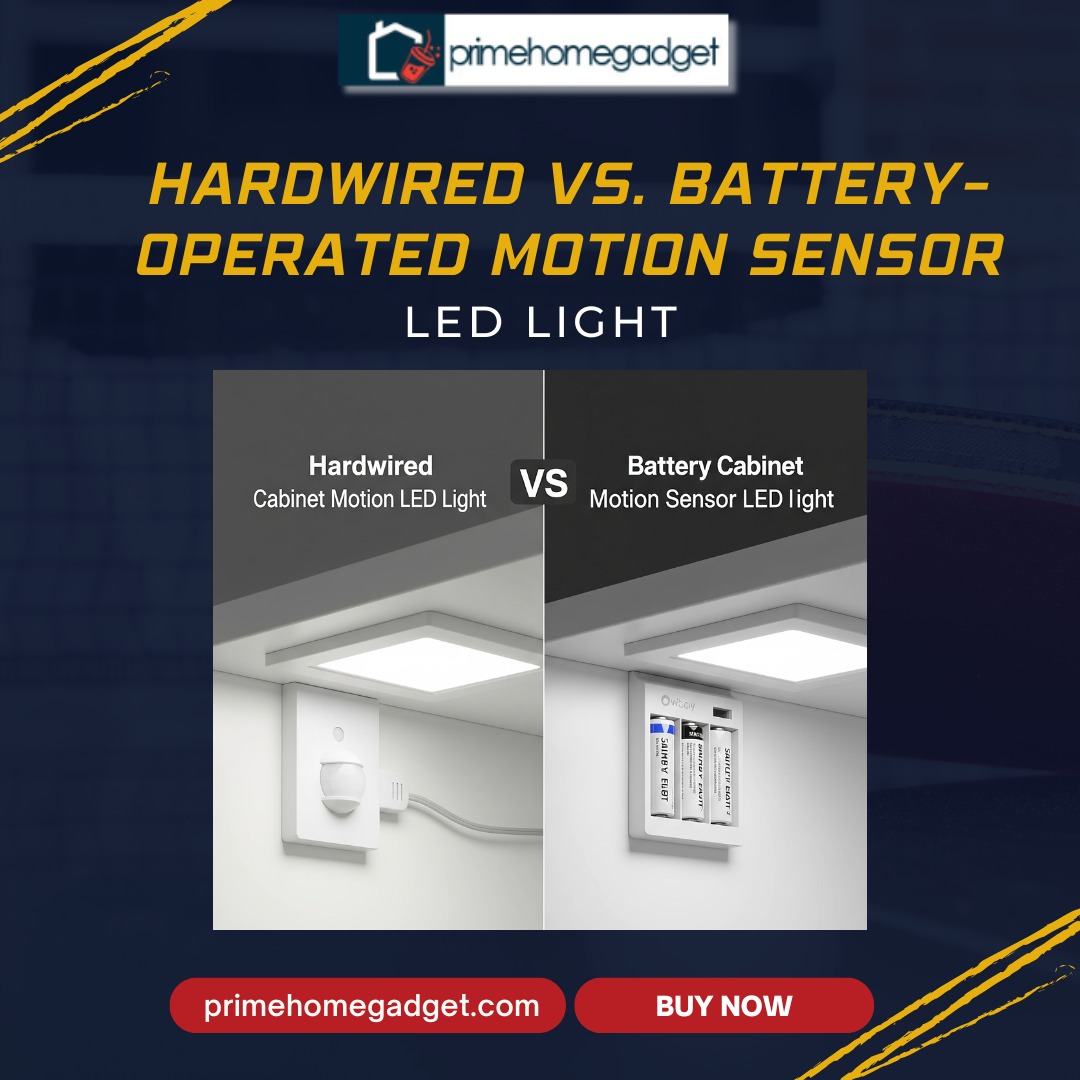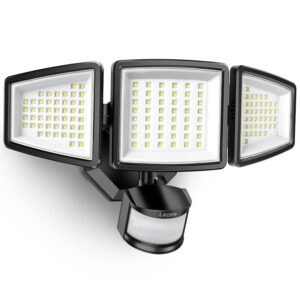Imagine you’re fumbling for your keys in the dark, juggling groceries while trying to navigate your dimly lit driveway. Suddenly, a bright LED light illuminates your path, triggered by your movement. That’s the magic of motion sensor LED lights—they’re like having a personal lighting assistant that never sleeps.
But here’s where it gets interesting: not all motion sensor lights are created equal. The battle between hardwired and battery-operated systems has homeowners scratching their heads, wondering which option will truly serve them best. After thoroughly examining user reviews, installation experiences, and real-world performance data, I’ve uncovered some fascinating insights that might surprise you.

What Are Motion Sensor LED Lights?
Motion sensor LED lights are intelligent lighting systems that automatically activate when they detect movement within their coverage area. These smart devices use various detection technologies—typically passive infrared (PIR) sensors—to identify changes in heat signatures, triggering the LED lights to illuminate spaces when needed.
The beauty of these systems lies in their dual purpose: they enhance security by deterring intruders while providing convenient, hands-free lighting for daily activities. Whether you’re arriving home after dark or need to navigate outdoor spaces safely, motion sensor LED lights act as your silent guardians.
What Are Hardwired and Battery-Operated Motion Sensor LED Lights?
Hardwired Motion Sensor LED Lights
These are connected directly to your home or building’s electrical system. Once installed, they draw power continuously from your electricity supply and don’t require battery replacements.
-
Where they shine: Great for permanent lighting solutions such as outdoor security lights, hallways, or garages.
-
What users love: “Set it and forget it” operation—no need to worry about batteries dying at critical moments.

Battery-Operated Motion Sensor LED Lights
These lights run on batteries (either replaceable or rechargeable) and do not require wiring. They are portable and can be installed virtually anywhere without professional help.
-
Where they shine: Perfect for closets, cabinets, stairways, or any space where wiring isn’t feasible.
-
What users love: Flexibility and ease of installation.
Hardwired vs. Battery-Operated: A Detailed Comparison Based on User Recommendations
After analysing hundreds of user reviews, installation experiences, and long-term performance reports, here’s what real homeowners have discovered about each option:
1. Installation Experience: The Make-or-Break Factor
Hardwired Systems: Users consistently praise the professional appearance and solid mounting of hardwired lights, but the installation process tells a different story. Sarah, a homeowner from Texas, shared, “The installation took my electrician three hours and cost $200 in labour alone. But five years later, I haven’t touched these lights once—they just work.”
Most users report needing professional installation unless they have electrical experience. The average installation cost ranges from $150 to $400 per fixture, depending on complexity and local labour rates.
Battery-Operated Systems: The installation simplicity wins users over immediately. Mike from Oregon noted, “I installed four battery-operated lights in under an hour with just a screwdriver. No wiring, no electrician—just mount and go.”
However, users also mention that finding the perfect placement often requires trial and error, since you’re not limited by existing electrical infrastructure.

2. Performance and Reliability: The Long-Term Reality
Hardwired Performance: Users report exceptional reliability with hardwired systems. The consistent power supply means no dimming over time, and the lights maintain full brightness regardless of weather conditions. Jennifer, who’s had her hardwired system for seven years, explains, “These lights have worked flawlessly through storms, power outages (once power returns), and extreme temperatures. I can’t remember the last time I even thought about them.”
The motion detection tends to be more consistent, with fewer false triggers or missed activations compared to battery-operated alternatives.
Battery-Operated Performance: User experiences vary significantly based on battery quality and environmental factors. During the first few months, most users report excellent performance. However, battery life becomes the determining factor for long-term satisfaction.
Tom from Minnesota discovered, “In winter, my battery-operated lights barely lasted three weeks before dimming. I learned that cold weather dramatically reduces battery performance.” Many users in colder climates report switching to hardwired systems after frustrating experiences with battery degradation.
3. Maintenance: The Ongoing Commitment
Hardwired Maintenance: Users love the minimal maintenance requirements. Beyond occasional cleaning and bulb replacement (for non-LED models), these systems rarely need attention. The main maintenance involves replacing the entire fixture every 10-15 years, which users find acceptable given the long service life.
Battery-Operated Maintenance: This is where user opinions become polarized. Some users appreciate the ability to easily replace batteries, while others find it tedious. Lisa from California shared: “I have eight battery-operated lights, and I’m constantly playing battery roulette – some last six months, others die after two. It’s become a monthly chore.”
Solar-powered battery units receive mixed reviews, with users reporting that solar panels can become dirty or damaged, affecting charging efficiency.

4. Cost Analysis: Beyond the Initial Investment
Hardwired Costs: Users initially baulk at the higher upfront investment but appreciate the long-term value. The average total cost (fixture + installation) ranges from $200-$500 per light, but users report minimal ongoing expenses beyond electricity usage.
Battery-Operated Costs: The lower initial cost (typically $30-$150 per fixture) attracts budget-conscious users, but ongoing battery replacement costs add up. Users report spending $20-$50 annually per light on batteries, making the long-term cost comparable to hardwired systems.
5. Weather Resistance: The Ultimate Test
Hardwired Weather Performance: Users consistently praise hardwired lights’ ability to withstand harsh weather conditions. The permanent mounting and sealed electrical connections provide superior protection against rain, snow, and temperature extremes.
Battery-Operated Weather Performance: User experiences vary widely based on build quality. Higher-end battery-operated models perform well, but cheaper versions often fail after exposure to moisture or extreme temperatures. Users frequently mention needing to replace battery compartments due to corrosion.
Based on comprehensive user feedback, here are the key recommendations:
Choose Hardwired When:
- You want a permanent, reliable solution
- Professional installation cost isn’t a concern
- You prioritise consistent performance over flexibility
- You’re installing lights in harsh weather environments
- You prefer minimal long-term maintenance
Choose Battery-Operated When:
- You need flexible placement options
- You’re renting or don’t want permanent modifications
- You enjoy DIY projects and easy installation
- You’re covering large areas where wiring would be expensive
- You want the ability to easily relocate lights
The choice between hardwired and battery-operated motion sensor LED lights boils down to your lifestyle, space, and budget. Hardwired lights are excellent for homeowners seeking robust, permanent solutions, while battery-operated lights cater to flexibility and convenience.
For the best of both worlds, some users recommend combining both types: hardwired for main areas and battery-operated for secondary spaces.


